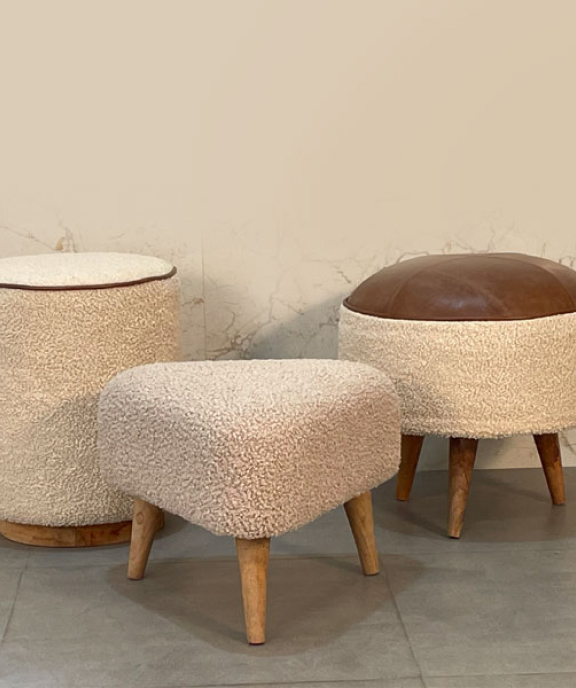Natural oils offer a sustainable and healthy alternative to traditional wood finishes. This article explores the application of natural oils for wood finishing, highlighting the benefits and process involved.
Key points covered include:
- Benefits: Eco-friendly wood finishes are safer for human health and the environment, produce minimal waste, and offer easy application.
- Oil Selection: Linseed oil, tung oil, Danish oil, and teak oil all have distinct properties for achieving various finishes and levels of protection.
- Surface Preparation: Sanding, cleaning, and drying the wood surface are all crucial for optimal finish application.
- Application: Apply thin, even coats of oil in the direction of the wood grain for proper absorption and avoid pooling.
- Natural Finish: Natural oils enhance the wood’s natural beauty while providing protection from moisture, UV rays, and wear.
- Maintenance: Regularly applying maintenance oil helps preserve the finish and extend the lifespan of the wood.
Natural oil finishes are a viable option for those seeking a safe, sustainable, and aesthetically pleasing way to finish wood surfaces.
Importance of Eco-Friendly Wood Finishes
The benefits of eco-friendly wood finishes lie in their positive impact on the environment and human health. These finishes prioritize sustainability by reducing industrial waste and minimizing environmental impact.
Opting for non-toxic eco-friendly stains creates safer living environments, particularly beneficial for individuals with asthma, allergies, or chemical sensitivities. Eco-friendly finishes are versatile in application settings, making finishing projects easier.
Their quick drying nature allows for efficient project completion, saving time and resources. Research shows that volatile organic compounds (VOCs) in conventional wood finishes can lead to serious health issues such as cancer and damage to the nervous system and organs.
Choosing sustainable and eco-friendly options for wood finishing is crucial for promoting health and environmental well-being.
Choosing the Right Natural Oil
Selecting the appropriate natural oil for wood finishing involves considering the distinct properties and benefits of each type.
Linseed oil, sourced from flax seeds, offers deep penetration and water resistance.
Tung oil, extracted from the nuts of the tung tree, provides durability and quick drying properties.
Danish oil, a mixture of oils, resins, and solvents, produces low-luster finishes.
Teak oil, known for its UV protection and water resistance, is suitable for dense hardwoods.
These oils enhance wood appearance, offer protection, and durability with various finishes. Choosing the right oil based on desired wood protection and aesthetics is crucial for achieving the desired outcome, whether it’s a glossy finish, a low-sheen appearance, or specific protective qualities.
Preparing the Wood Surface
Transitioning from selecting the appropriate natural oil for wood finishing, the subsequent step involves preparing the wood surface to ensure optimal outcomes. Adequate surface preparation is crucial for achieving a smooth and long-lasting finish.
This process entails sanding the wood using fine-grit sandpaper to establish a uniform surface and utilizing a wood cleaner to remove any contaminants that could impede the finish’s adhesion. Ensuring the wood is completely dry before applying natural oils helps prevent issues related to moisture.
Moreover, considering a wood conditioner can enhance the wood’s capacity to absorb the oils uniformly. Prior to advancing with the finishing process, scrutinize the wood surface for any imperfections or damages that may necessitate attention.
Applying Thin, Even Coats
For a smooth and even finish on wood surfaces, apply thin, uniform coats of natural oils using a high-quality brush or cloth. Work in the direction of the wood grain to ensure even coverage and optimal absorption into the wood fibers.
Avoid thick applications to prevent pooling, drips, and uneven drying. Multiple thin coats enhance absorption and durability of the finish.
Proper application with the right tools yields professional eco-friendly wood finishes.
Allowing Oil Penetration
For optimal results, ensure deep penetration of natural oils into the wood fibers to enhance durability and achieve a glossy finish. Maximizing oil penetration is crucial for improving wood longevity by providing nourishment and protection from within.
Oils like linseed oil and tung oil, when absorbed deeply into the wood fibers, accentuate its natural beauty and contribute to long-lasting preservation.
Achieving a Natural Finish
Aiming for a natural finish when using eco-friendly wood oils enhances the wood’s visual appeal and durability, contributing to its longevity. Natural oils like linseed oil, tung oil, and beeswax deeply penetrate the wood, nourishing the grain and creating a rich look.
This finish provides sustainable protection against moisture, UV damage, and wear and tear, helping preserve the wood and extend its lifespan. These eco-friendly wood oils are easy to apply and maintain, making them a convenient choice for finishing projects.
Choosing natural oils for wood finishes enhances the wood’s beauty and promotes better indoor air quality and a more sustainable environment, leading to health and environmental benefits.
Adding a Maintenance Oil
Applying a maintenance oil like Universal Maintenance Oil can effectively revitalize and safeguard wood surfaces, enhancing their natural beauty and longevity. Proper application of maintenance oils is crucial for maintaining wood finishes. To ensure optimal results, follow these essential tips:
- Select the right tools for application, such as a cloth or brush, to achieve an even and thorough coverage.
- Always apply the maintenance oil in the direction of the wood grain for maximum penetration and nourishment.
- Establish a regular maintenance schedule to prolong the lifespan of wood finishes.
- Periodically check the condition of the wood surface for any signs of wear, dryness, or cracking to determine the frequency of maintenance oil application.
Ensuring Longevity of Wood
Ensuring wood longevity involves employing proper maintenance practices and protective measures to preserve its natural beauty and structural integrity. Wood preservation and sustainability play crucial roles in maintaining long-term protection of wooden surfaces while reducing environmental impact.
Reapplying natural wood oils every 1-2 years is essential to uphold wood’s protection and durability. Prior to oil application, cleaning and drying wood surfaces is crucial for ensuring proper adhesion of the oils. Shielding wood from excess moisture and direct sunlight significantly extends its lifespan.
Refraining from using harsh chemical cleaners on wood finishes is important to prevent damage and sustain longevity. Periodically sanding and refinishing wood surfaces can help eliminate wear and tear, enhancing overall appearance and durability.
Eco-Friendly Wood Finish Benefits
Eco-friendly wood finishes provide benefits for the environment and human health. They contain natural ingredients like linseed oil, tung oil, beeswax, and carnauba wax, making them safer for individuals with asthma, allergies, or chemical sensitivities.
By using eco-friendly wood stains, you contribute to reducing industrial waste and minimizing harm to the environment. These finishes make finishing projects easier as they can be applied in various settings, simplifying the process for DIY enthusiasts and professionals alike.
Non-toxic stains dry quicker than traditional finishes, allowing for more efficient project completion and faster turnaround times.


